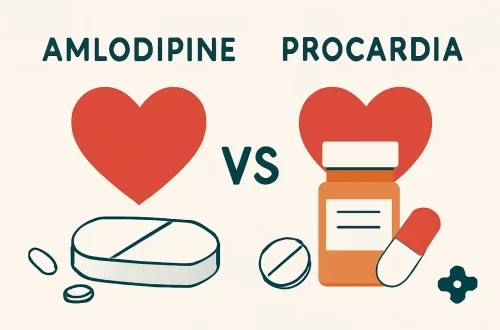
Essential Guide to Men’s Thigh Workouts for Strength and Tone
Building strong and toned thighs is essential for both aesthetics and functional fitness. The thighs consist of several muscle groups, including the quadriceps, hamstrings, and adductors, each playing a crucial role in lower body strength and mobility. Whether you’re looking to improve your athletic performance, enhance your physique, or simply maintain a healthy lifestyle, incorporating targeted thigh workouts into your fitness routine can help you achieve these goals.
Strong thighs contribute to better balance, stability, and overall lower body strength, which is vital for various physical activities such as running, cycling, and even daily tasks like walking or climbing stairs. Moreover, well-defined thighs can enhance your overall appearance and boost your confidence. However, many people often overlook this area during their workouts, focusing instead on upper body exercises or cardio routines.
In today’s fitness culture, where gym-goers are constantly seeking effective and efficient ways to maximize their workouts, understanding the importance of thigh workouts is more relevant than ever. With the right exercises, you can build strength, increase endurance, and achieve a toned look that complements your entire physique. This guide will explore various aspects of men’s thigh workouts, providing you with the knowledge and tools necessary to enhance your fitness journey.
Understanding the Anatomy of the Thigh
To effectively target the thighs during workouts, it’s essential to understand their anatomy. The thigh is primarily composed of four major muscle groups: the quadriceps, hamstrings, adductors, and the gluteus maximus.
The quadriceps, located at the front of the thigh, consist of four muscles that are responsible for knee extension. They play a vital role in activities such as squatting, jumping, and running. Strong quadriceps not only improve athletic performance but also help to stabilize the knee joint, reducing the risk of injuries.
On the other hand, the hamstrings are located at the back of the thigh and are critical for knee flexion and hip extension. They work in opposition to the quadriceps and are essential for movements like sprinting and bending. Neglecting the hamstrings can lead to muscle imbalances, which may result in injury or decreased performance.
The adductors are a group of muscles located on the inner thigh. They are responsible for bringing the legs together and stabilizing the pelvis during movement. Strong adductors contribute to better overall leg strength and can enhance athletic performance in sports that require lateral movements.
Finally, the gluteus maximus, while primarily a hip muscle, plays a significant role in thigh workouts. It assists in hip extension and helps stabilize the pelvis. A strong gluteus maximus can improve performance in a variety of lower body exercises.
Understanding these muscle groups and their functions will help you select the right exercises to target your thighs effectively. It’s important to create a well-rounded workout that addresses all areas of the thigh to ensure balanced strength and development.
Effective Exercises for Thigh Development
When it comes to thigh workouts, variety is key. A diverse range of exercises not only keeps your routine interesting but also ensures that you target all muscle groups effectively. Here are some of the most effective exercises for thigh development:
1. **Squats**: A staple in any lower body workout, squats target the quadriceps, hamstrings, and glutes. To perform a squat, stand with your feet shoulder-width apart, lower your body by bending your knees, and keep your chest up. Aim to get your thighs parallel to the ground before pushing through your heels to return to the starting position. Variations like goblet squats and barbell squats can increase the intensity.
2. **Lunges**: Lunges are fantastic for targeting the thighs and improving balance. Step forward with one leg, lowering your hips until both knees are bent at about a 90-degree angle. Make sure your front knee stays behind your toes. You can perform variations such as walking lunges or reverse lunges to keep your routine fresh.
3. **Leg Press**: The leg press machine is excellent for building overall leg strength. Position yourself on the machine and push the platform away using your legs. This exercise primarily targets the quadriceps while also engaging the hamstrings and glutes.
4. **Deadlifts**: While primarily a back exercise, deadlifts effectively target the hamstrings and glutes. Stand with your feet hip-width apart and a barbell in front of you. Bend at your hips and knees, grip the bar, and lift it by extending your hips and knees simultaneously.
5. **Leg Curls and Extensions**: These isolation exercises specifically target the hamstrings and quadriceps, respectively. They are excellent for building strength and definition in these muscle groups.
Incorporating these exercises into your routine will help you build strength and tone in your thighs. Aim for a combination of compound movements (like squats and deadlifts) and isolation exercises (like leg curls and extensions) for a comprehensive workout.
Designing a Balanced Thigh Workout Routine
Creating a balanced thigh workout routine is essential for achieving optimal results. A well-designed program should incorporate various exercises that target all major muscle groups in the thighs while also considering factors such as intensity, volume, and recovery.
Start by determining your fitness level and goals. If you’re a beginner, focus on mastering basic movements and gradually increase the intensity as you gain strength and confidence. For advanced lifters, consider incorporating heavier weights or more complex variations of exercises.
A typical thigh workout routine might include 3-4 sets of 8-12 repetitions for each exercise. Ensure to include both compound and isolation exercises for balanced development. For example, you can start with squats to engage multiple muscle groups, followed by lunges and leg press for additional volume, and finish with leg curls and extensions to isolate the hamstrings and quadriceps.
Don’t forget to incorporate rest days into your routine. Muscles need time to recover and grow after workouts, so allow at least 48 hours before targeting the same muscle groups again. Active recovery, such as light cardio or stretching, can help reduce soreness and improve flexibility.
Finally, consider your nutrition and hydration. Eating a balanced diet rich in protein, healthy fats, and carbohydrates will support muscle recovery and growth. Staying hydrated is equally important for optimal performance during workouts.
Incorporating Thigh Workouts into Your Fitness Routine
Integrating thigh workouts into your overall fitness routine is crucial for achieving a balanced physique. Whether you prefer gym workouts, home exercises, or outdoor activities, there are numerous ways to ensure that your thighs receive the attention they deserve.
If you’re hitting the gym, aim to include thigh workouts at least once or twice a week. You can create a dedicated leg day or incorporate thigh exercises into your full-body workouts. If you prefer bodyweight exercises, many effective thigh-targeting movements can be done at home or in parks, such as squats, lunges, and step-ups.
For those who enjoy outdoor activities, consider activities like cycling, hiking, or running, which naturally engage the thigh muscles. You can also participate in sports that require lateral movements, such as basketball or soccer, to further enhance thigh strength and endurance.
Don’t overlook the benefits of cross-training. Incorporating different forms of exercise, such as swimming or yoga, can improve overall fitness and flexibility while reducing the risk of injury. This holistic approach will not only enhance your thigh development but also contribute to your overall health and well-being.
In conclusion, building strong and toned thighs requires dedication, variety, and consistency. By understanding the anatomy of the thigh, selecting effective exercises, designing a balanced workout routine, and incorporating thigh workouts into your fitness regimen, you’ll be well on your way to achieving your strength and tone goals.
**Disclaimer**: This article is for informational purposes only and does not constitute medical advice. Always consult with a healthcare professional before starting any new exercise or diet program, especially if you have any pre-existing health conditions.




